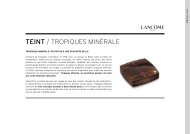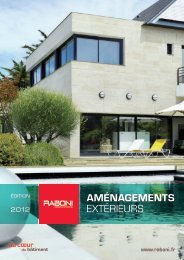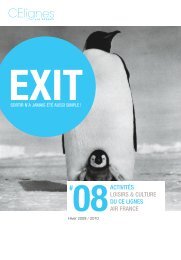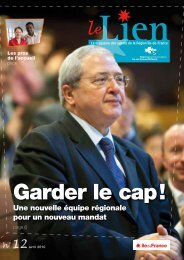Art Market Magazine - Visit zone-secure.net
Art Market Magazine - Visit zone-secure.net
Art Market Magazine - Visit zone-secure.net
You also want an ePaper? Increase the reach of your titles
YUMPU automatically turns print PDFs into web optimized ePapers that Google loves.
32 GAZETTE DROUOT INTERNATIONAL I N° 25<br />
Kashan tile from the<br />
first quarter of the 13th<br />
century, 25 x 39 cm.<br />
Estimate:<br />
€8,000/12,000.<br />
3 June<br />
The Orient in Paris<br />
For its sale of Orientalist works and art from the Orient, the Paris auction house Millon & Associés is providing a choice<br />
selection of some 200 Islamic objets d'art and a hundred-odd paintings, including two by José Cruz Herrera. These<br />
pictures feature the Spanish artist's favourite themes: Morocco and women. Be prepared to pay €70,000/80,000 to obtain<br />
one of these paintings. Connoisseurs will also linger over a Constantinople hammam scene by the Italian painter Amadeo<br />
Preziosi. A pretext to show naked women (who incidentally occupy the foreground of the composition), this watercolour<br />
drawing (€35,000/40,000) is a faithful image of the fantasy Orient popular with the artist's clientele. Preziosi lived much of<br />
his life in Constantinople, where he died. He excelled in drawing, particularly watercolour: a technique he used to depict<br />
delicate landscapes of the Bosphorus. However, the star of this first section is a painting by <strong>Art</strong>hur Ferraris (1846-1936),<br />
exhibited in the Salon of 1892. Its theme is one the artist loved: the streets of Cairo (€400,000/500,000). With the section<br />
devoted to the arts of Islam, connoisseurs will be eyeing two Iznik tiles from the Murad III period with a rich decoration of<br />
carnations, wild roses and tulips, of the sort that made this little Anatolian town famous. The Metropolitan Museum in New<br />
York and the Louvre in Paris each have a similar panel. The two here are estimated at €40,000/50,000. With ceramics, we<br />
can also mention this Kashan tile dating from the first quarter of the 13th century. The Kufic inscription "Bismillah<br />
al-rahmän al-r…" means "In the name of compassionate and merciful God…" A tile marking the beginning of a frieze,<br />
it once decorated an ancient mosque. The expert skill evident in this piece links it with the tomb of Kumm (1206) and a<br />
mausoleum in Mashhad (1215), cited by Oliver Watson. The workshops in Kashan, an Iranian city famous for the excellence<br />
of its ceramics with their metallic lustre glaze, produced highly refined shaped pieces and tiles used as architectural<br />
finishings. This know-how is attributed to the craftsmen of Fatimid Egypt who came to Iran. The tile also has a fine<br />
pedigree, as it comes from the former collection of Hakky-Bey, an Egyptian notable close to the royal family. This collection<br />
was dispersed successfullyin March 1906 at the Hôtel Drouot. S. P.-D.<br />
><br />
HD
















